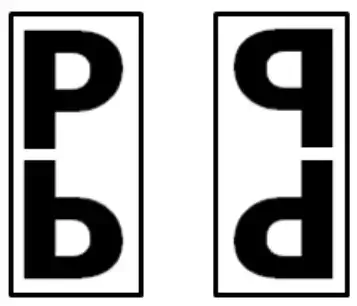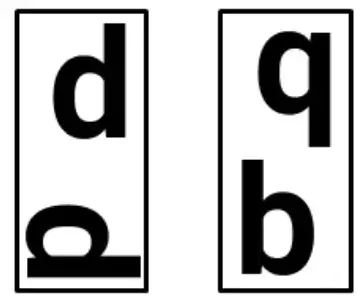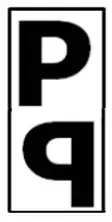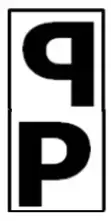 Free International Thomas GIA Test Practice – Sample Questions & Tips
Free International Thomas GIA Test Practice – Sample Questions & Tips
Updated February 27, 2025
The Thomas GIA Test is a popular aptitude assessment frequently used by companies and organizations as a part of their recruitment process. It is a unique and extremely challenging assessment - with around 200 questions to answer in less than 20 minutes!
To score in the top percentiles of the International Thomas GIA Test, you should practice with questions similar to those you will see on the real test and aim to improve your solving time. This page includes sample questions for each test section, expert tips, and answer explanations.
Success Stories: Our International Thomas GIA Test Practice
Thomas GIA - Reasoning Sample Questions
In this section, you must demonstrate problem-solving. You will be presented with a statement, and once you are ready, you will be asked a question regarding the statement (with the statement now not visible.
With an overall of 3-4 minutes, you will have 3-6 seconds for each question, meaning you must be able to work quickly.
We’ll begin with the statements and questions, both visible, to introduce you to the section. Later on, we’ll add a practice question.
Reasoning Question #1
Statement - Paul is taller than Roy
Question - Who is taller?
Reasoning Question #2
Statement - Cecilia is not as clever as Rose?
Question - Who is smarter?
Reasoning Tip:
- Decide whether each statement is negative or positive to simplify the questions. The first question's statement is positive – since it is direct (… is taller than…), while the second is negative (… is not as…).
- Next, ask yourself if the question is like the statement (like in the second option – clever and smart) or the opposite (the first question, tall and short)
This way, you can easily deduce the answer – i.e., the first question is positive and opposite, meaning the answer is the second character (Roy), while the second question is negative and direct, also meaning the second character (Rose – even if she is written as option A).
Boost Your Score on the GIA Test — Fast!
Master the Thomas International GIA test with expert-designed simulations. Sharpen your cognitive skills fast and score in the top percentiles to accelerate your career growth!
Reasoning Question #3
Statement - Chloe is not as happy as Charles.
Question - Who is sadder?
Note:
These questions may seem simple at first glance – and they actually are. Given enough time, most candidates can ace the test with high scores. However – since time is a key challenge in the test, keep that in mind when going through the questions, and be sure to read our valuable tips.

Thomas GIA - Perceptual Speed Sample Questions
This section requires you to identify and compare visual information rapidly. You will be presented with 4 pairs of letters – upper and lower cases. You must decide how many of the pairs match (meaning – have the same letter), with 0 being none, and 4 meaning all pairs match.
Once again, you will have an average of 5 seconds for each question, so be quick and see the best method for you.
Perceptual Speed Question #1
J F C Y
j f c i
Perceptual Speed Tip:
Trust your instincts! Perceptual Speed questions are straightforward – and require error-checking without additional steps (i.e., calculations or visual manipulation). Therefore – it is crucial that you do not 'waste' too much time on each question. Decide whether you prefer to compare upper to lower cases or the other way around – and work methodically and quickly. Even if you made an error, shake it off quickly and move on to the next question.
Perceptual Speed Question #2
w l v z
Y I V S
Perceptual Speed Question #3
O B D R
o d b r

Your Career Starts Here — Master the GIA Test!
Employers use the Thomas International GIA test to assess top talent. Stand out from the competition by preparing with our expert-designed GIA PrepPack:
- Realistic Thomas GIA mock tests to assess your skills.
- Additional targeted practice to improve your weak areas.
- A full test simulation to boost your speed and accuracy.
Get test-ready & take the next step in your career!
Thomas Gia - Number Speed and Accuracy Sample Questions
In this section, you'll need to manipulate numerical data and perform calculations with speed and accuracy. You will be presented with 3 numbers – your objective is to quickly decide which number is furthest from the middle number in the trio.
While this section may include a little bit more time for each question (or fewer questions for the overall time) with about 6-8 seconds per question, you must work here in steps. First, identify the middle number, and then quickly calculate which of the other two numbers is further (either bigger or smaller) from that number than the other one.
Number Speed & Accuracy Question #1
9 4 13
Number Speed & Accuracy Question #2
8 21 15
Number Speed & Accuracy Question #3
16 7 11
Number Speed & Accuracy Tip:
This section is all about methodical working. The numbers are not too complex, and the calculations are basic as well. However – after a while the numbers are confusing, and fatigue will affect your results. By approaching each question in the same solving method (i.e., the one presented in the explanations here), you can increase your chances of succeeding and your overall score.

Want a High GIA Score? Start Practicing Now!
Prepare with confidence using our Thomas International GIA Test PrepPack. Train under real exam conditions, track your progress, and sharpen your reasoning skills for top performance.
Thomas GIA – Word Meaning Sample Questions
This section measures your understanding and comprehension of words. You will be presented with 3 words – your objective is to quickly decide which words have a similar meaning or have something in common and click on the remaining one.
This section requires vocabulary knowledge and quick comparison. You will have approximately 5-6 seconds for each question, and therefore it is essential that you work quickly and not dwell over each question.
Word Meaning Question#1
Dusk Grape Dawn
Word Meaning Question#2
Mountain Hill Shirt
Word Meaning Question#3
Bridge Bright Desolate
Word Meaning Tip:
It’s not all about vocabulary. While vocabulary is highly important, there are times when you may find yourself uncertain what is the correct word. Try using a word you are familiar with in a sentence and think if the other words can have a logical impact (either supporting or opposing) to the sentence – or lack logical relation. I.e., "The bright sunlight makes me happy" – the word desolate is appliable since it is the opposite of happiness or light, while bridge is irrelevant to either part of the sentence.

Get The Full Thomas Gia PrepPack
Although many of the questions for the Thomas GIA test seem simple, don't let that fool you! The real challange is the limited time you have to answer. On a matter of seconds, you will be tested on your ability to answer quickly and accurately. The only way to ensure you can beat the time constraint is by practicing. Our PrepPack includes practice tests and simulations that will help you answer faster each time.
Thomas GIA – Spatial Visualization Sample Questions
These questions will evaluate your ability to visualize and mentally manipulate different shapes. Each question will present two boxes – each with two "shapes", which are, or resemble, alphabetical letters. Your objective is to choose whether each box contains the same figure (if the figure is rotated it is still the same figure) or not (if the figure is mirrored it is not the same figure anymore). Choose 0 if neither box contains a pair of the same figure, 1 if only one does, and 2 if both boxes contain a pair of the same figure.
This section may be one of the more challenging sections – especially since it contains very similar and confusing figures, which must quickly (in about 5-6 seconds) be understood and answered.
Spatial Visualization Question #1

Spatial Visualisation Tip:
Imagining rotations and flipping in your mind can be challenging and time-consuming. Therefore, try there are several figures and components that can be easily answered when seen. In the previous question, the bottom figures included d and b. You can intuitively respond to the question, by remembering that if the figure is rotated in 180˚, the vertical line that connects to the half-circular part of the figure should be on the opposite side – and if it is not, then the figure has been flipped.
Spatial Visualization Question #2

Spatial Visualization Question #3

JobTestPrep’s Thomas GIA Test Practice
Prepare for the Thomas GIA test with the most realistic practice experience available! Get full access to mock tests and simulations for each of the five sections of the test, with exclusive questions, explanations, and tips that you won't find anywhere else. Practicing with realistic questions and learning expert tips will help you develop a winning answering strategy.
Access the Thomas GIA PrepPack for the most complete and tailored studying experience.
Thomas GIA Test Practice FAQs
There are approximately 200 questions to answer in less than 20 minutes in the Thomas GIA test. For some of the questions, you will only have 3-6 seconds to respond.
A good score in the Thomas GIA Tests depends on the role and industry. The test provides a percentile ranking, comparing your performance to others.
- Above 70th percentile – Strong score, indicating high cognitive ability
- 50th-70th percentile – Average to above average, suitable for many roles
- Below 50th percentile – Below average, but suitability depends on job requirements
For competitive or high-demand positions, aiming for 70% or higher is recommended.










